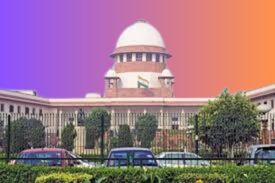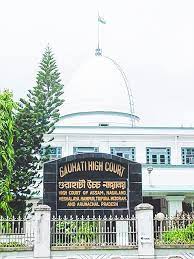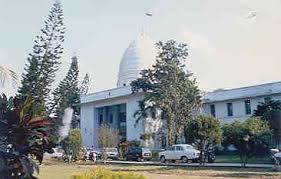Had been given on lease to Respondent Nos. 2 & 5 (now deceased) namely Respondent No.1 namely Kundalik Damodar Modhave (now deceased) respectively, (hereinafter referred to as “tenants”) through two separate lease deeds dated 30.08.1962, for a period of 13 years. The lease in respect of Survey No. 291 was specifically executed for cultivation of sugarcane crop, whereas the lease for Survey No.290/1 & 290/2 were for cultivation, generally. (Para 1)
The landlord sought to recover possession for the purpose of personal cultivation. It was stated in the notice that the tenanted land was the principal source of income for the family and that their livelihood was dependent on the cultivation of such lands. It is critical to note at the very outset that the notice pertained to land bearing Survey No.291 only and no separate notice of termination of tenancy was issued in respect of land bearing Survey No. 290/1 & 290/2. (Para 2)
Ultimately, the original authority allowed the application of the landlord[Order dated 17.04.1978 in Tenancy Case No.2/77] and directed that 22 acres of the suit lands[Sum total of land bearing Survey No. 291 and Survey No. 290/1& 290/2] (33 acres 21 guntas) was to be restored to him. (Para 5)
The appellate authority, vide a common judgment dated 21.11.78, upheld the findings of the original authority but modified the extent of land, which was to be restored to the landlord. It held that the landlord was entitled to possession of 17 acres 17 guntas of the suit land. The appellate authority notes that the original authority’s direction for restoration of 22 acres of suit land proceeded on a misinterpretation of Section 31B of the Act. (Para 7)
Upon examination of the contentions urged by both the sides, the revisional authority allowed the application filed on behalf of the tenant, dismissed the application of the landlord and accordingly, ordered that the case be remanded to the original authority ‘for framing 8 Revision No.3/79 issues under the provisions of Section 31A to 31D of the Tenancy Act, 1948 in respect of Survey No. 291 only’. (Para 9)
It was directed that the original authority shall consider the matter afresh and examine if the heirs of the landlord had any bonafide requirement for personal cultivation in light of the changed circumstances (death of landlord). (Para 11)
It was held therein that if landlord had died pending eviction proceedings, the bonafide requirement of lands for personal cultivation had to be demonstrated and proved afresh by the heirs of the landlord. (Para 11)
Aggrieved by the judgment of the High Court dated 29.07.2005, the landlord filed a special leave petition before this Court. Leave to appeal was granted by Order dated 9.12.2014. (Para 12)
And are satisfied that termination notice has been issued only in respect of Survey No.291 and there is not even a whisper with regard to Survey No.290/1 & 290/2 in the notice dated 05.09.1975. This fact had been rightly noticed in the order of the revisional authority. Therefore, we shall proceed to consider the dispute only in so far as Survey No. 291 is concerned. (Para 16)
Whether the holding of the landlord exceeds one economic holding and whether the landlord earns his livelihood principally by agriculture or by agricultural labour?” (Para 17)
According to the aforesaid proviso, if the holding of the landlord does not exceed one economic holding and the landlord’s principal source of income is dependent on agriculture or agricultural labor, then, it follows, as per the amended notification, that the conditions mentioned in Section 31A & 31B shall not govern the present dispute and the lessor’s right to resume land shall be subject to conditions set out in Section 33B(5)(b) and (c). If the holding of the landlord exceeds one economic holding or his principal source of income is not dependent on agriculture, then, Section 31A-31D will govern the present dispute. (Para 20)
The fact finding authorities have concluded that the landlord holds 13 acres of jirayat land, apart from the land leased out to the tenant under the two lease deeds. The definition of ‘economic holding’ in Section 2(6A) requires us to account for the total land held by a person, whether as an owner or tenant. There is no definition in the Act for the expression ‘land held’. However, we find the expression ‘to hold land’ defined in the Maharashtra Land Revenue Code, 1966 (for short ‘the Code’). It reads as under: “to hold land” or “to be a land-holder or holder of land” means to be lawfully in possession of land, whether such possession is actual or not.” (Para 21)
The tenant has not led any evidence to show that the landlord holds any land as a tenant. Further, no evidence has been led to contradict the fact that the landlord holds land as an owner, in excess of 13 acres of jirayat land. Therefore, we ought to proceed on the premise that the holding of the landlord is 13 acres of jirayat land. The revisional authority has misinterpreted the word ‘holding’. In determining the holding of the landlord, it has taken into account the land leased to the tenant and has, on that basis, concluded that the holding of the landlord is in excess of one unit of economic holding. As we have explained above, only such land which a person holds (is in possession) as an owner or tenant, must be taken into account. The land leased to the tenants cannot be said to be held by the landlord either as an owner, or as a tenant. (Para 23)
Section 6 of the Act provides that one unit of economic holding in the context of jirayat land is equivalent to a holding of 16 acres. It is thus clear that the holding of the landlord cannot be said to be in excess of one unit of economic holding. The original authority has recorded a finding that the landlord’s principal source of income is from agriculture. This finding has not been disturbed or challenged by the appellate authority or the revisional authority. Since the twin conditions provided in the proviso as found in the amended notification stand satisfied, the outcome of the dispute will have to be decided in accordance with Section 33(B)(5)(b) and not according to Section 31A and 31B. (Para 24)
According to Section 33(B)(5)(b), the landlord’s entitlement to terminate tenancy and recover possession of land leased is only to the extent ‘of so much thereof as would result in both the landlord and the tenant holding thereafter in the total an equal area for personal cultivation’. The original authority and appellate authority have disagreed on the extent of land to be resumed to the landlord. In deciding the extent of land to be restored, the original authority has applied the provision contained in Section 33(B)(5)(b), whereas the appellate authority has applied the provision contained in Section 31B. According to us, the original authority was correct in applying the provision contained in Section 33B(5)(b) but has fallen into error in its interpretation and application of the said provision. The appellate authority could not have applied Section 31B since the application of 31B stands excluded by Section 43A and the amended notification, as we have discussed above. Now, the question still remains as to how much land must be restored to the landlord. This question will turn on the interpretation to be laid on the language contained in Section 33(B)(5)(b) and the construction of expression : ‘in the total an equal area for personal cultivation’? (Para 25)
From the evidence on record, we know that the landlord has 13 acres of jirayat land, which he holds as owner. The tenants in Survey No. 291 were Mr. Murlidhar Damodhar Modhe and Mr. Bhausaheb Damodar Modhe. The tenant in Survey No.290/1 & 290/2 was one, Mr. Kundalik Damodar Modhe. (Para 27)
Having regard to the aforesaid analysis of law, we are of the considered view that this litigation is pending for nearly 50 years and as such relegating the parties to the authorities would only add salt to the wound or acrimony between the parties would continue to haunt the future generations and as such we have undertaken the exercise of applying the formula prescribed under Section 33B(5)(b) as illustrated in Chunnilal Bhailal Wani case (supra) of the Act to allocate the respective shares of the parties on the basis of not only admission found from the depositions recorded at the earliest point of time but also on the revenue records which has been relied upon by the authorities (Para 28)
Hence, for the purposes of computation we have confined only to the two revenue records available in the original file, namely, the account extract of Form No.8A relating to the year August 1977 since the deposition of the landlord came to be recorded on 09.06.1977, 20.06.1978 and that of the respondent on 22.08.1977. When such an exercise is undertaken, the irresistible conclusion which is to be drawn would be that the appellant would be entitled to 13 Acres 30 Guntas as computed above which is in tune with principles enunciated in the full Bench Judgement of Bombay High Court in Devidas Narayan More (supra). (Para 28)
While considering an eviction petition filed by the landlord against his tenant, laid down the principle that the crucial date for deciding the bona fides of the requirement of the landlord is the date of his application for eviction. Events occurring subsequent to this date have no bearing on the issue as to whether the eviction was a bona fide requirement. It was reasoned therein that if every subsequent development was to be accounted for in the post-petition period, there would perhaps be no end so long as the unfortunate situation in the litigative slow-process system subsists. Therefore, the High Court fell into grave error in ordering remand of the case by considering, events which occurred subsequent to the date of filing of the petition. (Para 29)
We may also record here that it was unnecessary for the revisional authority to remand the case for framing an issue on the 12 2001 2 SCC 604; See also Shakuntala Bai v. Narayan Das, 2004 5 SCC 772, Para 10 applicability of Section 31A-31D. The applicability of those provisions was dependent on the question of whether the landlord’s holding exceeded one unit of economic holding. That question was merely one of law, the fact of the landlord’s holding having already come on record before the original authority. The revisional authority could have taken upon itself the task of deciding the question and disposing off the dispute before itself. Be that as it may. (Para 30)
And the application filed by the original landlord under Section 43A of the Bombay Tenancy and Agricultural Lands Act, 1956 is allowed in part and hold that appellants (legal heirs of original landlord) are entitled to 8.34 Acres in Survey No.291 and the jurisdictional tehsildar shall take steps to handover physical possession of the said land to the appellants as indicated herein expeditiously and at any rate within an outer limit of three months from the date of receipt of this Order. (Para 31)
SUPREME COURT OF INDIA
2023 STPL(Web) 365 SC
[2023 INSC 939]
Keshav Bhaurao Yeole (D) By Lrs. Vs. Muralidhar (D) & Ors.
Civil Appeal No.11104 of 2014-Decided on 19-10-2023
https://stpllaw.in/wp-content/uploads/2023/10/2023-STPLWeb-365-SC.pdf







